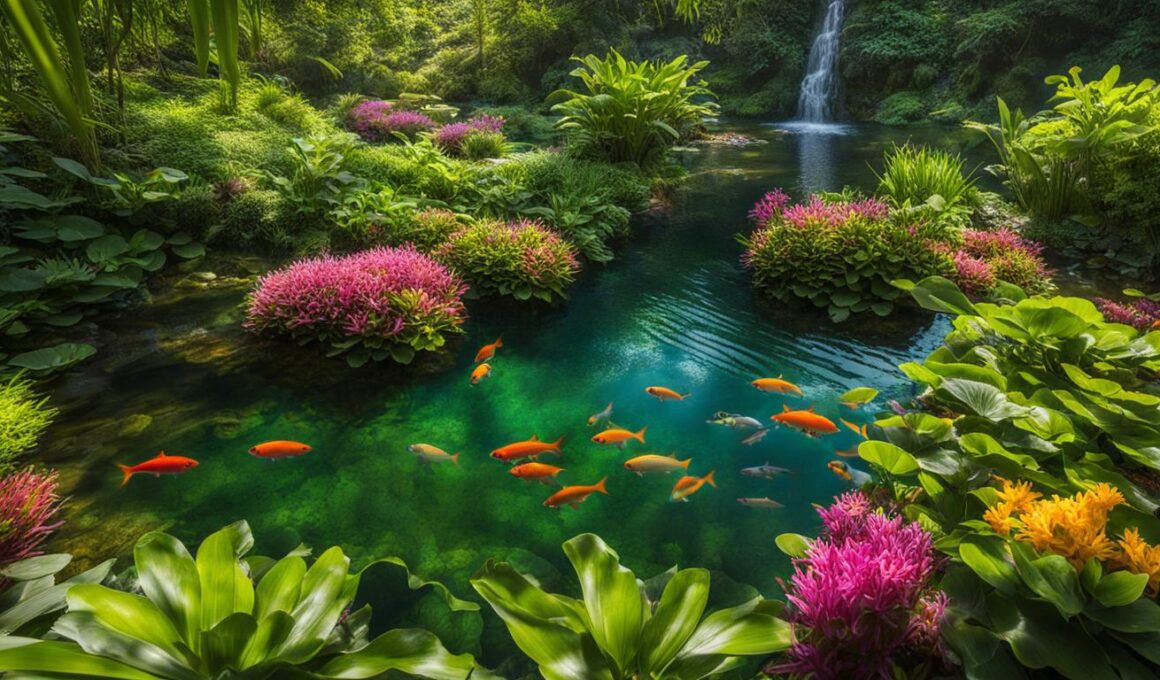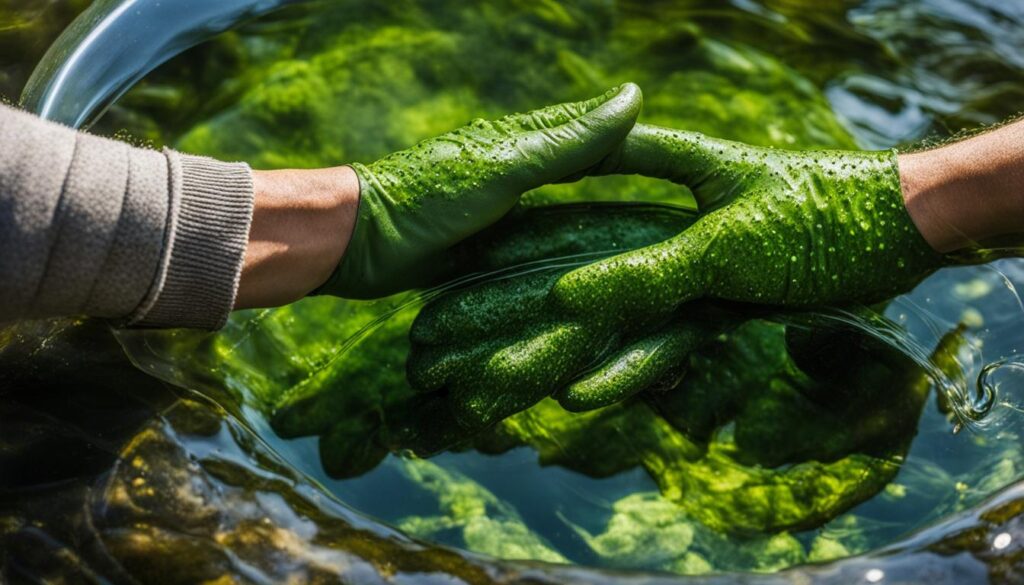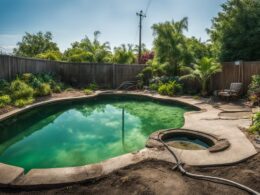Welcome to our comprehensive guide on how to effectively get rid of pond algae while keeping your fish safe and maintaining a healthy habitat. Dealing with excessive algae growth is crucial for the overall well-being of your pond, as it can hinder water movement, release harmful gases, and create an unhealthy environment for your aquatic friends. In this article, we’ll explore eco-friendly solutions to help you achieve a clear and thriving pond without harming your fish.
When it comes to combating pond algae, there are a variety of physical, chemical, animal, and plant-based methods that can be employed. Manual removal using pond rakes or nets is a commonly used technique, especially for smaller ponds with minimal overgrowth. However, larger ponds or significant algae growth may require the use of larger raking machines. Although manual removal doesn’t pull up algae by the roots, it can still be effective when combined with preventative measures.
One effective method of preventing algae regrowth is the addition of ultraviolet (UV) light clarifiers. These devices emit high levels of UV light, inhibiting algae growth and preventing their ability to reproduce. Another solution is to keep the water moving through the use of aerators or fountains. By maintaining highly-oxygenated water, these tools help prevent excessive algae growth and maintain a healthier aquatic environment for your fish.
Non-toxic chemical solutions are also available to combat pond algae without harming your fish. Consider dyeing the pond water with a darker color to reduce algae regrowth, as bright light promotes their growth. Peroxyhydrate granular algaecides are a safe and effective algaecide option that destroys algae growth through oxidation. Additionally, introducing floating oxygenating plants, such as lilies or lotuses, can provide shade and absorb excess nutrients in the water, starving the algae.
If your pond is dominated by filamentous algae, introducing algae-eating fish like carp can be beneficial. They help control algae growth by consuming it, but their invasiveness should be monitored and addressed. Another natural solution is the use of barley straw, which releases substances like humic acid and hydrogen peroxide when decomposed, effectively killing algae while being safe for fish. Lastly, feeding your fish high-quality food and promoting their digestion can reduce excess nutrients that contribute to algae growth.
By implementing these eco-friendly solutions and preventive measures, you can successfully combat pond algae while maintaining a healthy habitat for your fish. Stay tuned for the following sections where we’ll delve deeper into each method to help you achieve a clear and thriving pond environment.
Manual and Machine Solutions for Algae Removal
When it comes to tackling excessive algae growth in your pond, manual removal methods can be highly effective. For small ponds with minimal overgrowth, utilizing pond rakes or nets is a popular approach. These tools allow you to physically remove the algae, helping to restore clarity and balance to your pond ecosystem. However, it’s important to note that manual removal alone may not completely eradicate the problem, as it does not remove the algae by the roots.
To complement manual removal and prevent regrowth, other preventative measures are essential. One effective solution is the use of ultraviolet (UV) light clarifiers. By installing these devices in your pond, they emit high levels of UV light that inhibit algae growth by destroying their ability to reproduce. This helps to keep your pond water clear and free from excessive algae.
Another key factor in preventing algae overgrowth is to keep the water moving. Stagnant water provides an ideal environment for algae to thrive, so introducing aerators or fountains can be highly beneficial. These devices ensure highly-oxygenated water, creating an unfavorable environment for algae to grow and spread. Keeping the water moving also helps to maintain a healthy habitat for fish, promoting overall pond wellness.
By combining manual removal methods with the use of ultraviolet light clarifiers and keeping the water moving, you can effectively combat algae overgrowth and maintain a clear and thriving pond. Remember, a proactive approach is crucial in preventing algae regrowth and preserving the health of your pond ecosystem.
Non-Toxic Chemical Solutions and Natural Methods
When it comes to removing algae from your pond without harming your fish, there are several non-toxic chemical solutions and natural methods to consider. One method is dyeing the pond water a darker color, as bright light promotes algae growth. By reducing the amount of light that reaches the water, you can help prevent algae regrowth.
Another effective solution is the use of peroxyhydrate granular algaecides. These safe algaecides work by oxidizing algae growth, effectively eliminating it from your pond. Introducing floating oxygenating plants, such as lilies or lotuses, can also help control algae by providing shade and absorbing excess nutrients that the algae feed on.
Consider adding carp to your pond if it is dominated by filamentous algae. Carp are algae-eating fish that can help keep the algae population in check. However, it’s important to monitor their presence and address any potential invasiveness. Additionally, using barley straw is a natural and safe method to control algae. When decomposed, barley straw releases substances like humic acid and hydrogen peroxide, effectively killing algae while keeping your fish unharmed.
Lastly, don’t forget about the importance of feeding your fish high-quality food. By providing them with nutritionally balanced meals, you can help minimize the excess nutrients that contribute to algae growth in your pond. By combining these non-toxic chemical solutions and natural methods, you can maintain a clear and thriving pond while preserving the health and well-being of your fish.
Can Killing Cattails Harm Fish in the Pond?
Killing cattails naturally can harm fish in the pond. Cattails provide important habitat for fish, acting as a refuge for young fish and spawning ground. Removing them completely can disrupt the ecosystem balance and impact the fish population. It is important to consider alternative methods for managing cattail growth.










